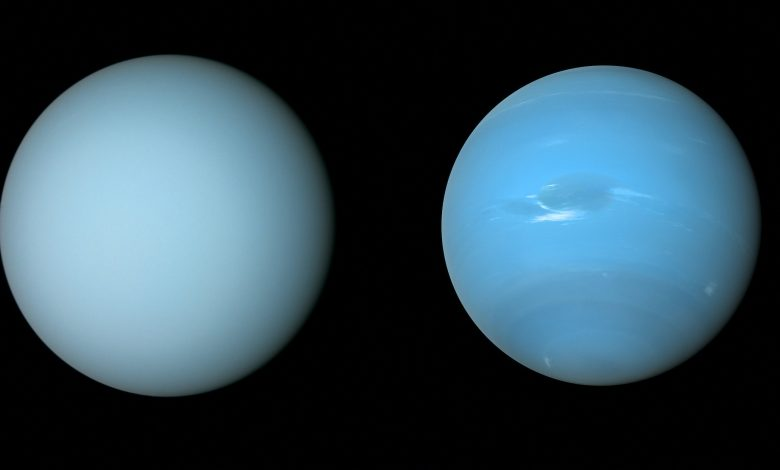Some planets contain rivers of diamonds

Scientists suggested the formation of rivers of diamonds in the hollows of the planets Uranus and Neptune, after conducting a simulation using a simple type of plastic to recreate the conditions that were supposed to have led to its presence on the two planets, according to a study published Friday.
Scientists hypothesized that huge pressures turn hydrogen and carbon into diamonds, flowing thousands of kilometers deep under the gaseous surfaces of the two icy giant planets.
The study, published in the journal “Science Advances,” indicated that the friction of oxygen with this mixture facilitates the formation of diamonds.
“A very special kind.”
Dominique Krauss, a physicist from the German research laboratory HZDR and one of the co-authors of the study, said that these rivers are most likely of a very special type.
Dominic Krause told AFP that the diamonds are likely to form from a "hot and dense liquid", before slowly flowing towards the rocky region in the middle of the two planets at a depth of 10,000 km below their surface. The liquid then spreads in layers "over a distance of hundreds of kilometers or more".
Scientists from the HZDR laboratory, the German University of Rostock and the French Ecole Polytechnic are trying to recreate the conditions in which diamond rivers are formed.
Scientists used a simple type of plastic that plays a role in mixing the components necessary to form diamonds, which are carbon, hydrogen and oxygen, and it is the same type of plastic used in the manufacture of soft drink containers. Then they exposed it to heat by using a powerful laser in the Slack laboratory in Stanford, USA.
production in the laboratory
"Producing nanodiamonds with a laser is a much cleaner and more controllable method than conventional ones," said Benjamin Ofori-Okai, a Slack scientist and one of the study's authors.
Dominique Krause also pointed out that the nano-diamonds that were formed were seen through very simple X-rays, but of amazing density, and they are so small that they are impossible to see with the naked eye.
This discovery paves the way for a new method for producing nanodiamonds, which is increasingly being used in many fields, including medical probes, unconventional surgery or quantum processing techniques.
Scientists believe that the diamonds that are formed on these two planets may be larger in size than that component in the tests carried out on Earth, and their size may be equivalent to millions of carats, according to a statement published with the study.
Oxygen, which is present in large quantities in these two planets, facilitated the formation of diamonds.
The industrial method for manufacturing nano-diamonds is to expose carbon-rich materials to very powerful explosions.
As for the diamonds formed on the planets Neptune and Uranus, which are the two most distant planets in the solar system, future space missions must wait to learn more information about them. To date, only one NASA probe, Voyager 2, has been sent to the two icy planets.
Source: websites

